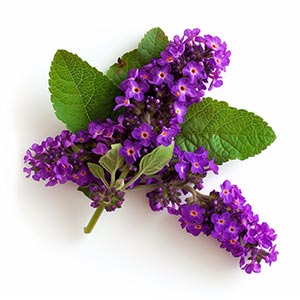Heliotrope, a natural ingredient with a sweet, floral, and slightly nutty aroma, was first utilized in perfumery during the 19th century after it was introduced by European explorers and botanists. Its popularity led to widespread use in various products such as perfumes, cosmetics, skin care and traditional medicines. When you smell something sweet, powdery, fluffy-little-cloud-like in a perfume, chances are there's a touch of heliotrope in there. Or do you get a whiff of almond…? Maybe that's chameleon-like heliotrope, in the blend… A touch of vanilla? That could be heliotrope, too. The use of this gloriously purple-coloured plant in perfumery goes right the way back to Ancient Egypt. Technically, heliotrope can be still extracted by maceration (or through solvent extraction, the modern form of enfleurage), an echo of those times – but today it's synthetic heliotropin – which perfumers rely on. Heliotrope's teamed with violets and iris for a talcum-powdery, lipstick-esque sweetness – but as you may now have guessed, it's actually very versatile, becoming almost mouthwatering when used alongside bitter almond, each ingredient turbo-charging the other's marzipan-ish qualities. Put it with frangipani or vanilla, though, and their mutual sweetness comes out…
Natural or Synthetic?
The scent of Heliotrope in perfumery is recreated synthetically, as the natural extraction of heliotrope fragrance is not feasible. Heliotrope's characteristic sweet, floral, and slightly almond-like aroma is mimicked using synthetic compounds. These compounds are designed to replicate the powdery and vanilla-like qualities of heliotrope flowers.
Fragrance Families Heliotrope Most Commonly Found In
Show fragrances that contain Heliotrope as a note



